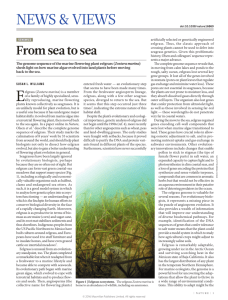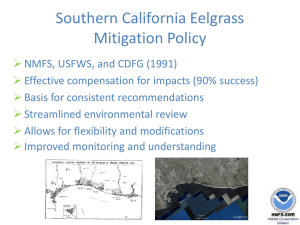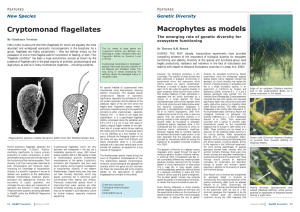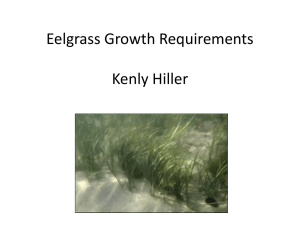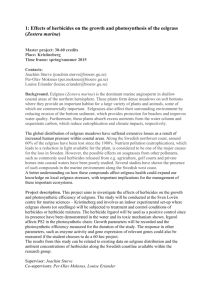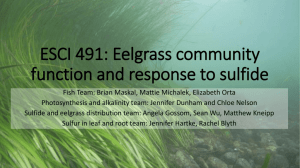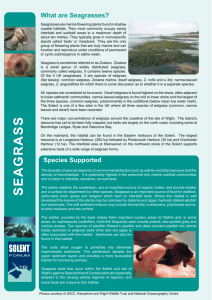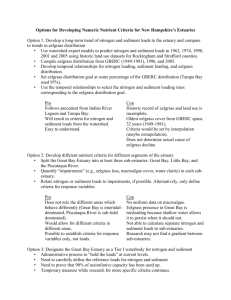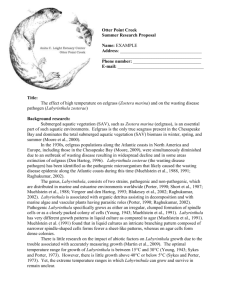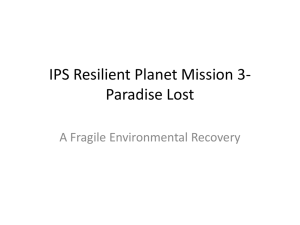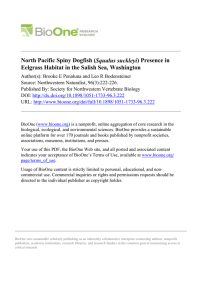Individual-Based Model (Ibm) Predicting Impacts Of Climate Change
advertisement
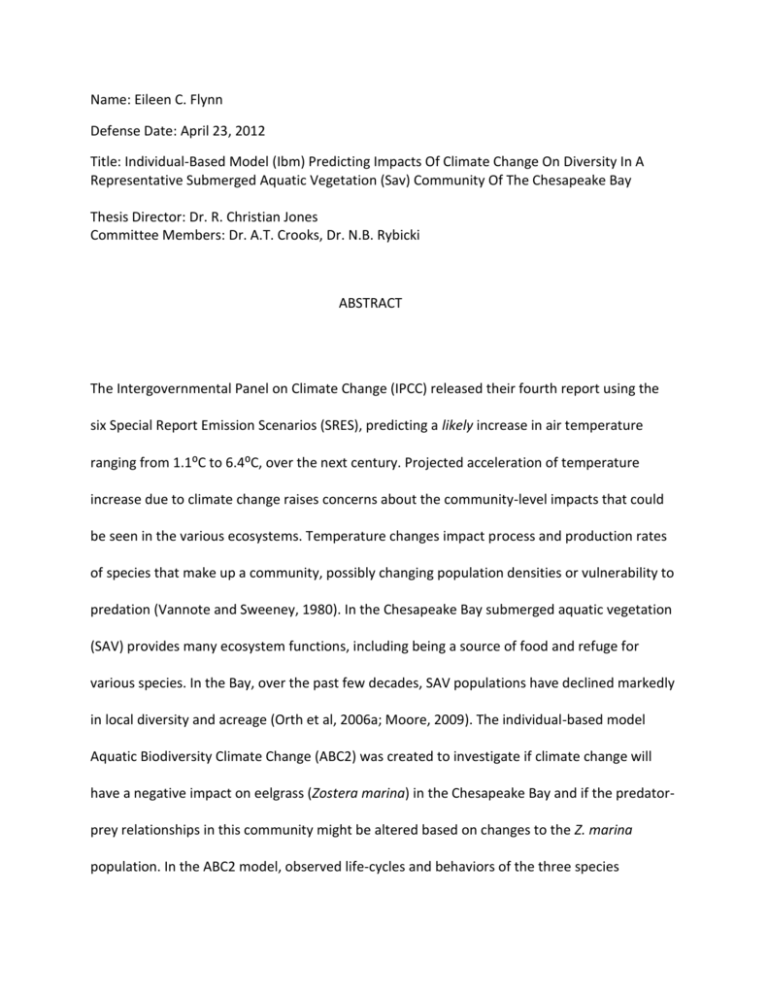
Name: Eileen C. Flynn Defense Date: April 23, 2012 Title: Individual-Based Model (Ibm) Predicting Impacts Of Climate Change On Diversity In A Representative Submerged Aquatic Vegetation (Sav) Community Of The Chesapeake Bay Thesis Director: Dr. R. Christian Jones Committee Members: Dr. A.T. Crooks, Dr. N.B. Rybicki ABSTRACT The Intergovernmental Panel on Climate Change (IPCC) released their fourth report using the six Special Report Emission Scenarios (SRES), predicting a likely increase in air temperature ranging from 1.1⁰C to 6.4⁰C, over the next century. Projected acceleration of temperature increase due to climate change raises concerns about the community-level impacts that could be seen in the various ecosystems. Temperature changes impact process and production rates of species that make up a community, possibly changing population densities or vulnerability to predation (Vannote and Sweeney, 1980). In the Chesapeake Bay submerged aquatic vegetation (SAV) provides many ecosystem functions, including being a source of food and refuge for various species. In the Bay, over the past few decades, SAV populations have declined markedly in local diversity and acreage (Orth et al, 2006a; Moore, 2009). The individual-based model Aquatic Biodiversity Climate Change (ABC2) was created to investigate if climate change will have a negative impact on eelgrass (Zostera marina) in the Chesapeake Bay and if the predatorprey relationships in this community might be altered based on changes to the Z. marina population. In the ABC2 model, observed life-cycles and behaviors of the three species (eelgrass, caprellids and spot) were utilized to design the individual agent types. These observations were gathered through scientific literature review. Seasonal temperatures play a large role in eelgrass growth. In the Bay, eelgrass are slow-growing in the winter when temperatures are low and experience defoliation in August-September due to temperatures >25⁰C (Nejrup and Pedersen, 2008; Orth and Moore, 1986). In the model, the eelgrass population followed these seasonal fluctuations, except with slight changes that emerge over time in the runs. In model runs with a high likely increase (+0.064⁰C per year) the eelgrass populations were depressed for more days following high temperatures in the summer compared to the eelgrass populations in the runs with a low likely increase (+0.011⁰C per year). The eelgrass biomass was slower to rebound in the warmer model runs; this impacted the predator-prey relationship. The predator in the model, spot (Leiostomus xanthurus) has a higher success of consuming prey, caprellid amphipods (Caprella sp.) when eelgrass density levels are < 516 m-2. This lower eelgrass density occurs for a longer timeframe in the model runs with the high likely temperature increase (+0.064⁰C per year), leaving the caprellids vulnerable to predation for a longer time each year, leading to a reduction in the population.
